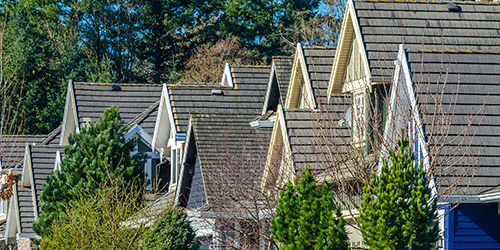How Property Values Are Assessed

When someone buys real estate, the assessor usually assigns a value that is equal to the purchase price, or “acquisition value.” If the Market Value is not similar to the purchase price, then by law, the Assessor must enroll the property at Market Value.
After that, the property’s assessed value can only increase by two percent or the allowed rate of inflation, whichever is lower, until the property sells. This is because County assessors use Proposition 13 laws to determine the value of real property.
After the property is sold, the new assessed value will usually be equal to the most recent purchase price.
Overview
When someone buys real estate, the assessor usually assigns a value that is equal to the purchase price, or “acquisition value.” If the Market Value is not similar to the purchase price, then by law, the Assessor must enroll the property at Market Value.
After that, the property’s assessed value can only increase by two percent or the allowed rate of inflation, whichever is lower, until the property sells. This is because County assessors use Proposition 13 laws to determine the value of real property.
After the property is sold, the new assessed value will usually be equal to the most recent purchase price.
Start of the Assessment Process
Current Market Value
Real property is valued at its current market value at the time it changes ownership. Most of the time the sales price equals market value, but not always. In other words, the assessed value for property resets to market value (what a willing buyer would pay for it) every time there is a change of ownership on the property.
Base Year Value
The assessed value is set when a property is purchased or transferred and is called the “base year value.” After that, the base year value can only increase two percent or less each year, even if inflation is higher. This cumulative value is called the “factored base year value.”
Proposition 13
Proposition 13 was a landmark decision by California’s voters in June 1978 to limit property taxes. Since the passage of Proposition 13, the Assessor values property only when there is change in ownership, new construction, or the market value goes below the base year value.
California’s Proposition 13 caps the growth of a property’s assessed value at no more than 2 percent a year. If the market value of a property falls below the base year value (plus 2 percent per year, compounded), Proposition 8 (passed in 1978 shortly after Proposition 13), allows the property to be reassessed at the lower value temporarily. When the market value of the property rises, the assessed value and resulting property taxes, may increase more than 2 percent a year, compounded up to the annually adjusted Proposition 13 cap.
Proposition 13 and Proposition 8 Properties
The 2% limit does not apply to properties that have been assessed under Proposition 8 rules due to a decline in value. Properties reassessed as a result of a decline in value may increase or decrease by any percentage, but in no case may their assessed value exceed their Proposition 13 factored base year value.
When a there is a change in the manner that title is being held, the Assessor receives a copy of the recorded deed or other official document and determines if an appraisal is required under State Law. An ownership transfer may trigger reappraisal of your property resulting in a change in your property taxes. If reappraisal is required, an appraisal is made to determine the new assessed value. You will be notified of the new assessment and the right to appeal. .
New Construction or Improvements
Copies of building permits are sent to the Assessor. Land development, new buildings, additions, and other structures require an appraisal from the Assessor and may require an inspection. Structural repairs and/or replacement are not appraisable events in most situations.
The value of new construction is added to the existing improvement assessed value. The new assessed value will not change except for the annual inflation adjustment of up to 2%. As with all newly assessed values, the property owner has the right to appeal the value.
Property Improvements Are Assessed Separately
When property owners improve or remodel their property, the additions or upgrades are valued at market value in that year. Only the value of the new addition or upgrade will be added to your existing assessed value.
The new value can only increase by up to two percent each year after that. The unimproved portion of the property continues to be assessed based on its original acquisition (purchase) value.
For example, if a homeowner purchased a home and then add a garage eight years later, the home and garage are assessed separately that year. The original property is assessed at its original base year value adjusted upward each year while the garage would be assessed at its own market value adjusted upward. The property’s new assessed value would be the old value plus the value of the improvement or improvements.
Improvements That Do Not Increase Assessed Value
- Accessibility construction for disabled homeowners
- Accessibility compliance construction for any property
- Reconstruction following environmental contamination
- Reconstruction following natural disaster
- Solar energy construction (initial installation)
- Fire–safety improvements
- Seismic safety improvements
When real estate market declines or property damage occurs, a property’s market value may fall below its assessed value (set by Proposition 13).